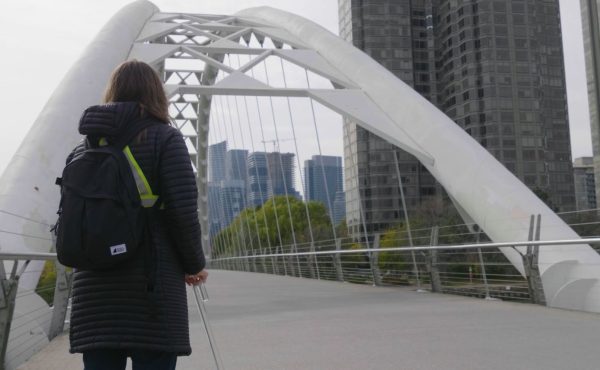
Cross-posted from No Mean City, Alex’s personal blog on architecture
![]()
Why would a deer cross the road?
Actually, with their wild habitats cut up by highways, deer, lynx and other forest species cross the road all the time. And it’s dead serious when they are hit by cars and trucks. Such collisions have increased by 50% in the past 15 years.
To address this issue, the ARC International Wildlife Crossing Structure competition drew ideas from distinguished landscape architects, architects, engineers and ecologists for a model highway overpass for wild animals. The Toronto office of Janet Rosenberg and Associates was among the finalists.
The competition (see video here) solicited entries for a specific site in Colorado’s West Vail Pass, where Interstate 70 cuts between two parkland zones. But really this is an ideas exercise: the point is to develop a prototype for such crossings everywhere. “At its most basic, it’s about reconciling the conflict between roads and wildlife, people and animals,” says the competition adviser Nina Marie Lister, a planning prof at Ryerson University who studies infrastructure.
Wildlife overpasses already exist: some of the most successful are in Banff National Park, which has 13 of them. But they’re basically road bridges, which are expensive, unnecessarily heavy, and inhospitable to different species – forcing them to converge on a single, narrow path.
The winner, from Michael van Valkenburgh, suggests a “kit of parts,” made of precast concrete, that can be easily transported, built in different configurations and planted with different “habitat bands.” It’s worth looking at the winning proposal here.
But I want to delve into the Rosenberg submission, which is a fascinating piece of cross-disciplinary design. I’d encourage you to check it out here.
Rosenberg’s design does some of the same things as the winner. Its structure is modular and adaptable to different sites; it supplies different routes for wildlife – three bands at each end, allowing nine different routes across. But it adds a couple of interesting notes, partly thanks to input from the animal researcher Temple Grandin.
Working with the engineers at Blackwell Bowick, Rosenberg’s office created a modular system of “strands” from a material called wood-core fiberglass that they say is durable, light and green to produce. The forms they designed – which are simple, adaptable, and, according to JRALA, very cheap to produce – are also quite beautiful.
The surface would be planted with native species of shrubs, grasses and forbes, all in trays that could be grown in nurseries and dropped into place. The separate strands of the overpass leave gaps that could be planted with native trees.
Then there’s Grandin’s input, which helped the designers give sensory cues to the animals. Janet Rosenberg quotes Grandin: “An animal’s world is vision, sound, touch, smell. It’s not about language. You have to get into the sensory world in order to understand them.”
Those sculptural forms along the edge are functional: they are designed to block out engine noise and headlights – which terrify animals – where those forces are most potent. The vertical elements also mimic the forms of trees and offer perches for birds. This all creates a visual and sonic environment of tree-like forms, birdsong, and muted road sounds that is welcoming to animals.
The use of the colour red is also significant. Large mammals other than us primates apparently don’t see red: they perceive it as grey. So the red blends into the background for the overpass’s animal “clients,” but could make the bridge into an icon as well.
That raises an interesting tension between form and function. Rosenberg’s office implies that this sort of infrastructure should not have its forms dictated primarily by aesthetics. I would broaden that to include almost all sorts of building. And yet, if the process of designing an effective, inexpensive structure generates something pretty, why not? In fact, Rosenberg suggests that a beautiful overpass can be a sort of billboard that signals to us that we are sharing the road, and the planet.






5 comments
Well judging by the renderings it will keep the Mountain Lion’s well fed.
We Really need a wildlife crossing to connect the Niagara Escarpment across the 401, near Milton.
Another would also be very useful in eastern Ontario, in the A2A (Algonquin to Adirondack Corridor).
Depending on the size of the animal, it needn’t be nearly so elaborate. Highways in Europe often have tunnels for animals under them:
http://www.flickr.com/photos/gemeente-tilburg/4967539938/
http://www.geocaching.com/seek/cache_details.aspx?guid=154f6f08-9c76-47d8-83fd-5113482b60ee
We could use more attractive overpasses across highways in general. I think they could function as grand entrances to Toronto near the city’s boundaries along the QEW and 401, for instance.
It is very good way for saving animal’s life. I m very happy to see this and get lot of knowledge. And thought of Red boundary is excellent. It is very effective, inexpensive structure.Thanks for sharing this information.